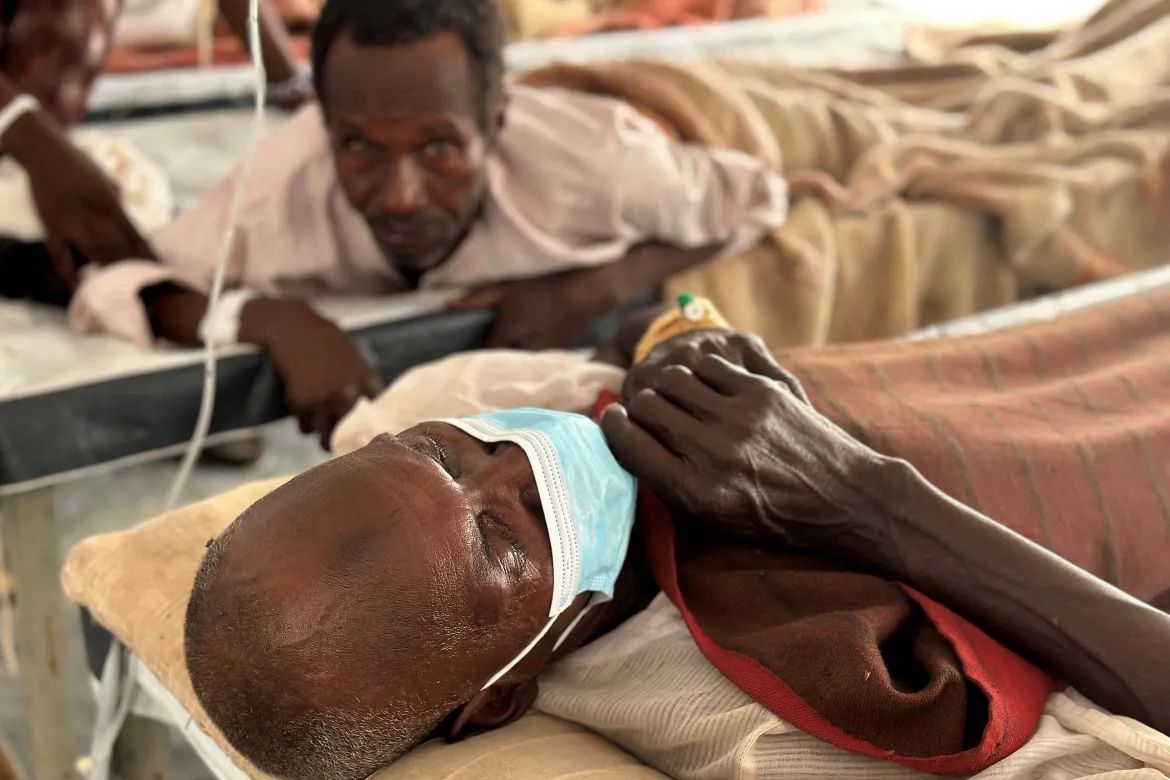
According to the ministry’s Emergency Operation Center, which reviewed surveillance report in its latest session in Khartoum, hundreds of cholera infections and thousands of dengue cases were documented during the last week of September.
The data showed 641 cholera infections recorded in 14 states and 3,126 dengue cases across seven states between September 20 and 26. South Kordofan alone accounted for nearly 40 percent of all cholera cases, while Blue Nile, North Darfur, Central Darfur, and White Nile also registered significant numbers. Dengue fever was concentrated in the capital region, with nearly four out of five cases reported in Khartoum State. Gezira accounted for 13 percent of infections, while White Nile reported 6 percent. In addition, health officials confirmed 102 cases of hepatitis, all of them concentrated in Gezira.
The ministry’s rainy-season emergency report highlighted broader humanitarian fallout, stating that 386 families, a total of 1,876 individuals, were directly affected by floods and seasonal hazards across three states. The report outlined coordinated efforts between health authorities and partner organizations to identify new cases, strengthen early detection systems, and intervene in affected regions.
Environmental health measures were also noted, including the removal of more than 16,000 tons of waste, equivalent to 76 percent of targeted clean-up operations. Efforts included the distribution of chlorine tablets and mosquito nets, alongside spraying campaigns and vector surveys in vulnerable areas. Public health teams reportedly reached over 23,000 homes through awareness visits, covering nearly 96 percent of their target households.
However, the supply chain report revealed sharp disparities in the availability of epidemic-related medicines and consumables across state-level warehouses. Some organizations have stepped in with additional support, but shortages remain a major challenge. The national laboratory network has been analyzing samples and recently deployed new mobile laboratories to strengthen diagnostic capacity in remote areas.
Quarantine authorities reported screening 11,343 individuals at various entry points into Sudan. In the same period, 7,760 Sudanese nationals voluntarily returned from Egypt, while 757 people sought care at emergency clinics.
The spread of cholera and dengue reflects Sudan’s worsening health conditions, which have been compounded by ongoing war and the collapse of basic services. Seasonal rains and flooding have fueled the spread of waterborne and mosquito-borne illnesses, while years of underinvestment in infrastructure have left communities vulnerable to recurring epidemics. Malaria, cholera, and dengue continue to strike with regularity, and health experts warn that the rainy season multiplies the risks of outbreaks.
The war has further crippled Sudan’s ability to respond. In Darfur and other conflict-affected regions, hospitals and clinics face severe shortages of medicines, staff, and equipment. Many facilities have closed or are operating at minimal capacity, leaving civilians without reliable access to lifesaving care. The combination of violence, mass displacement, and fragile supply chains has created conditions where epidemics spread unchecked.
The de facto Ministry of Health in Port Sudan acknowledged the scale of the crisis through its reporting but has struggled to mount a comprehensive national response. Without consistent supplies of medicine, improved sanitation measures, and unimpeded access for health workers, the risk of further escalating remains high. International humanitarian groups warn that Sudan’s health emergency could deteriorate further the conflict drags on and climate conditions worsen.

